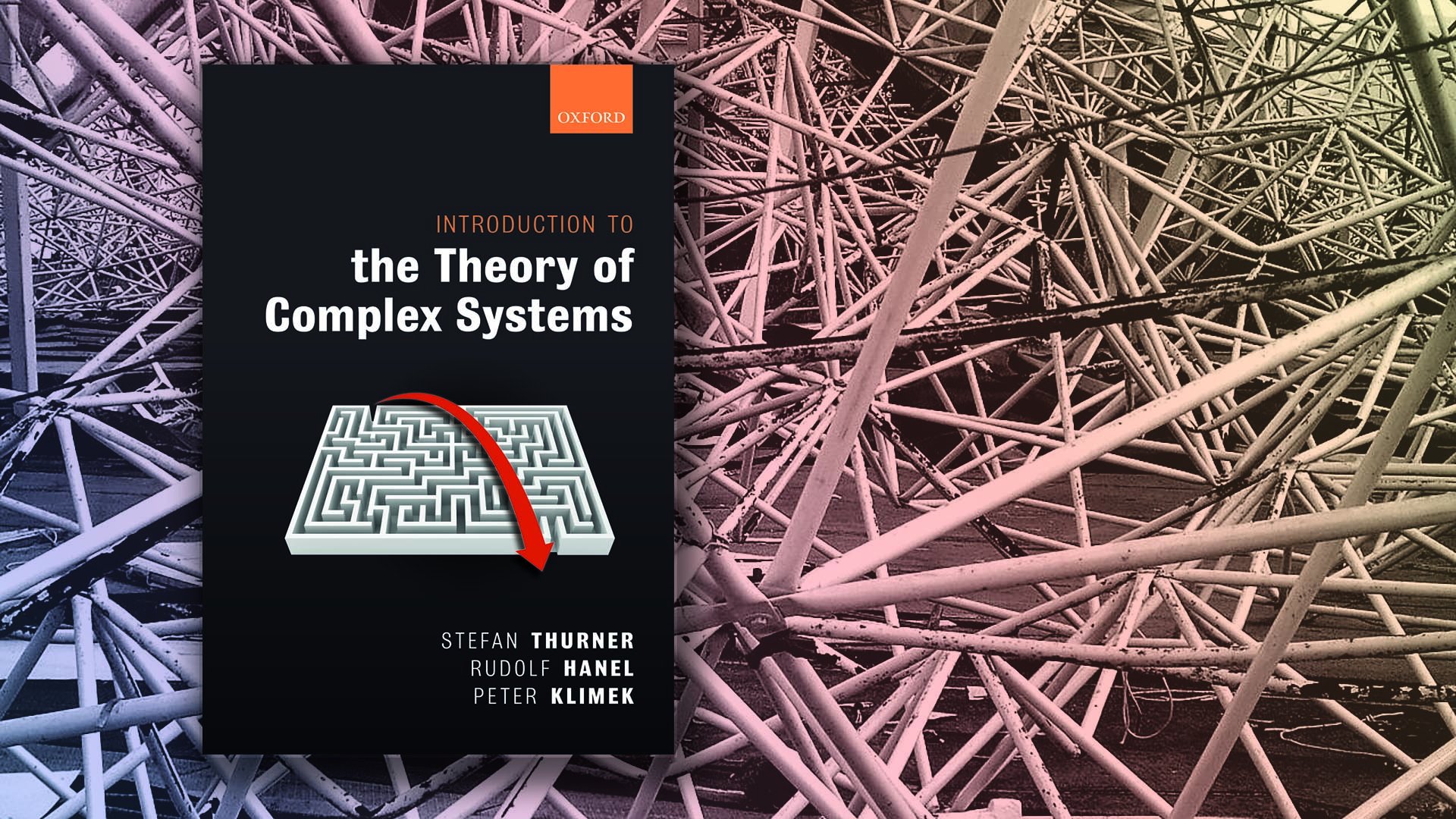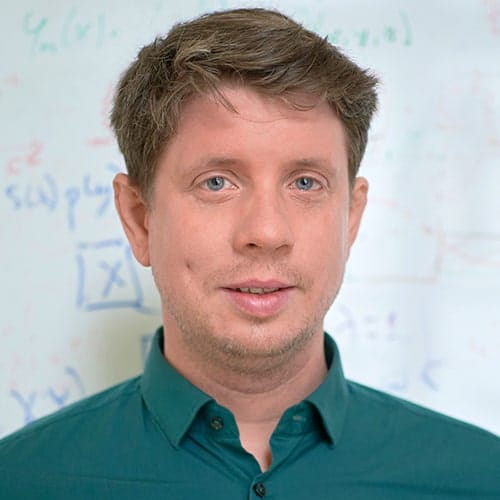HOT FROM THE PRINTER PRESS:
“INTRODUCTION TO THE THEORY OF COMPLEX SYSTEMS”
We proudly announce: The new student textbook by Stefan Thurner, Rudolf Hanel, and Peter Klimek has just appeared at Oxford University Press!
“This book will surely become a standard text for anyone who wants to seriously understand complexity no matter what their background or stage of career. It is written from a physicist’s perspective, stressing mechanism, underlying principles and mathematical rigour, yet is eminently readable and pedagogical.”
Geoffrey West, Santa Fe Institute
TIME FOR AN OVERVIEW
The three researchers, all of them members of the Hub, noticed a lack of a simple, hence comprehensive overview of the field when they were teaching beginners classes. “The existing introductions to complex systems, network theory, agent-based models et cetera – although some of them classics – represent 20th century knowledge,” says Stefan. Hence, since the turn of the millennium complexity science has been prospering and progressing, not least due to the exponential rise of data gathering devices and thus: data.
“Most students entering science today will later work as data analysts,” says Peter, who noticed a constant rise in the number of students from different disciplines in their “Introduction to complex systems” class. “Our textbook not only gives an overview, but also provides the up-to-date mathematical knowledge to deal with data, in particular with complex systems,” he adds.
UNDERSTANDING COMPLEX SYSTEMS
“Practically all areas of life on this planet are constantly confronted with complex systems, be it ecosystems, societies, traffic, financial markets, opinion formation and spreading, or the internet and social media,” reads the summary of the book.
What are complex systems? Up to now, definitions were not standardized. For their book the authors attempt to define them as systems with many interacting agents that change their properties while – and because – they are interacting. For instance, a tax changes the economy, that changes the income, that changes the spending of the people, that changes the economy; or the Internet prospers by being used what prompts inventions that change the Internet use–and at some point society as whole…
Complexity used to be a tough nut to crack for scientists. But Big Data changes the picture. For the first time in history complex systems can be approached empirically: With data, physicists are able to develop and test models, pursue experiments, verify or falsify their hypotheses – with the aim to predict and eventually manage complex systems.
Data made the field so interesting for physicists. “We are the folks that keep on trying until we have a solution,” Stefan claims. “Physicists explained gases, opened up fields like astronomy or chemistry; now physicists are up to understand the much more complicated world of complexity.”
COMPLEX SYSTEMS WORK LIKE ALGORITHMS
The usual analytical equations that we know from physics don’t apply for these constantly changing, interacting, evolving systems. “Complex systems don’t work like trajectoriers of cannonballs or the movement of planets,” Rudi exemplifies. “That’s why we need new mathematical and statistical tools.”
For their book, Stefan, Rudi and Peter scrolled through literally thousands of articles – the work of a whole generation of complexity scientists. “Many of them tell the same story over and over again, without even knowing it,” Peter recalls. The book is the effort to connect the many loose ends and to build what the three authors call a “coherent framework” to approach complex systems. “They work like adaptive algorithms,” says Rudi. “We present a simple, comprehensive definition that describes almost all complex systems.”
In practice this simple definition is just a starting point, as a complex system can be very specific. “99 percent of our work is to find out which of the specific properties are relevant to describe and manage a given complex system,” Stefan points out. “But our claim is that the underlying assumption – the basic notion of a complex system as an algorithm – remains always the same.”
NO UNIFIED THEORY. YET…
Doesn’t this sound a bit like a “unified theory” for complex systems? The researchers show a broad smile (they are physicists, after all…).
Stefan: “Maybe it is too early to call it a unified theory, yet to a certain extend it is. We have lots of pieces. It is as if you were looking at a fragmentary mosaic: You can see already how the whole looks like. This is where we are now.”
One of the masterminds of the Santa Fe Institute, Brian Arthur, for his part thinks they are on the right track. “Complexity until now has been lacking a strong theoretical underpinning. Now it has one,” he stated after having read the “Introduction to the Theory of Complex Systems” by Stefan Thurner, Rudolf Hanel and Peter Klimek. “This book is a tour de force. Excellent!”



